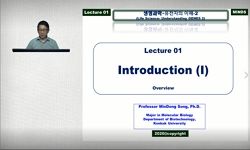Background: Honey bees play a crucial role in pollination and ecological balance. Apis mellifera L. colonies, especially those located in specific geographic regions, such as the palm garden in Eastern Thailand, are susceptible to potential threats fr...
http://chineseinput.net/에서 pinyin(병음)방식으로 중국어를 변환할 수 있습니다.
변환된 중국어를 복사하여 사용하시면 됩니다.
- 中文 을 입력하시려면 zhongwen을 입력하시고 space를누르시면됩니다.
- 北京 을 입력하시려면 beijing을 입력하시고 space를 누르시면 됩니다.


Detection of microbial organisms on Apis mellifera L. beehives in palm garden, Eastern Thailand
한글로보기https://www.riss.kr/link?id=A108937614
-
저자
Dokuta Sirikwan (School of Health Sciences Research, Research Institute for Health Sciences, Chiang Mai University, Chiang Mai 50200, Thailand) ; Yadoung Sumed (Environmental Sciences Program, Faculty of Sciences, Chiang Mai University, Chiang Mai 50200, Thailand) ; Jeeno Peerapong (School of Health Sciences Research, Research Institute for Health Sciences, Chiang Mai University, Chiang Mai 50200, Thailand) ; Hongjaisee Sayamon (School of Health Sciences Research, Research Institute for Health Sciences, Chiang Mai University, Chiang Mai 50200, Thailand) ; Khamnoi Phadungkiat (Microbiology Unit, Diagnostic Laboratory, Maharaj Nakorn Chiang Mai Hospital, Faculty of Medicine, Chiang Mai University, Chiang Mai 50200, Thailand) ; Danmek Khanchai (School of Agriculture and Natural Resources, University of Phayao, Phayao 56000, Thailand) ; Maitip Jakkrawut (Faculty of Science, Energy and Environment, King Mongkut’s University of Technology North Bangkok, Rayong Campus, Rayong 21120, Thailand) ; Chuttong Bajaree (Meliponini and Apini Research Laboratory, Department of Entomology and Plant Pathology, Faculty of Agriculture, Chiang Mai University, Chiang Mai 50200, Thailand) ; Hongsibsong Surat (School of Health Sciences Research, Research Institute for Health Sciences, Chiang Mai University, Chiang Mai 50200, ThailandEnvironmental, Occupational Health Sciences, and NCD Center of Excellence, Research Institute for Health Sciences, Chiang Mai Uni)
- 발행기관
- 학술지명
- 권호사항
-
발행연도
2024
-
작성언어
English
- 주제어
-
등재정보
KCI등재,SCOPUS
-
자료형태
학술저널
- 발행기관 URL
-
수록면
17-23(7쪽)
- DOI식별코드
- 제공처
-
0
상세조회 -
0
다운로드
부가정보
다국어 초록 (Multilingual Abstract)
Results: Ten swabs in transport media were swabbed and obtained from different parts of each beehive (1 swab per beehive), for a total of 10 hives. Traditional microbial culture- based methods, biochemical tests, and antimicrobial susceptibility (disc-diffusion) tests were used to detect microbial organisms and antibiotic resistance in bacteria. The swab tests from nine beehives resulted in the detection of Gram-positive bacteria (63.64%), Gram-negative bacteria (27.27%), and fungi/yeast (9.09%). These microorganisms are classified as a group of coagulase-negative Staphylococcus spp. and made up 40.91% of the bacteria discovered. Other bacteria found were Coryneform bacteria (13.64%), Pantoea spp. (13.64%), Bacillus spp. (9.09%), yeast (9.09%), glucose non-fermentative Gram-negative bacilli (9.09%), and Pseudomonas spp. (4.55%). However, due to the traditional culture- based and 0biochemical tests usually used to identify the microbial organisms in clinical specimens and the limitation of identifying some environmental microbial species, the results of the antimicrobial susceptibility test cannot reveal if the organism is resistant or susceptible to the drug. Nevertheless, drug-sensitive inhibition zones were formed with each antibiotic agent.
Conclusions: Overall, the study supports prevention, healthcare, and public health systems. The contamination of microorganisms in the beehives may affect the quality of honey and other bee products or even the health of the beekeeper. To avoid this kind of contamination, it is therefore necessary to wear personal protective equipment while harvesting honey and other bee products.
Background: Honey bees play a crucial role in pollination and ecological balance. Apis mellifera L. colonies, especially those located in specific geographic regions, such as the palm garden in Eastern Thailand, are susceptible to potential threats from microbial contaminants. Understanding and detecting microbial organisms in these beehives is essential for the preservation of bee health, honey production, and the broader ecosystem. However, the problem of microbial infection and antibiotic-resistant bacteria is more severe and continuously increasing, resulting in a health, economic, and social crisis. The purpose of this study is to determine the prevalence of microorganisms in A. mellifera beehives in palm gardens in Rayong province, Eastern Thailand.
Results: Ten swabs in transport media were swabbed and obtained from different parts of each beehive (1 swab per beehive), for a total of 10 hives. Traditional microbial culture- based methods, biochemical tests, and antimicrobial susceptibility (disc-diffusion) tests were used to detect microbial organisms and antibiotic resistance in bacteria. The swab tests from nine beehives resulted in the detection of Gram-positive bacteria (63.64%), Gram-negative bacteria (27.27%), and fungi/yeast (9.09%). These microorganisms are classified as a group of coagulase-negative Staphylococcus spp. and made up 40.91% of the bacteria discovered. Other bacteria found were Coryneform bacteria (13.64%), Pantoea spp. (13.64%), Bacillus spp. (9.09%), yeast (9.09%), glucose non-fermentative Gram-negative bacilli (9.09%), and Pseudomonas spp. (4.55%). However, due to the traditional culture- based and 0biochemical tests usually used to identify the microbial organisms in clinical specimens and the limitation of identifying some environmental microbial species, the results of the antimicrobial susceptibility test cannot reveal if the organism is resistant or susceptible to the drug. Nevertheless, drug-sensitive inhibition zones were formed with each antibiotic agent.
Conclusions: Overall, the study supports prevention, healthcare, and public health systems. The contamination of microorganisms in the beehives may affect the quality of honey and other bee products or even the health of the beekeeper. To avoid this kind of contamination, it is therefore necessary to wear personal protective equipment while harvesting honey and other bee products.
동일학술지(권/호) 다른 논문
-
Biodiversity in Egypt contributing to world biodiversity
- 한국생태학회
- Shaltout Kamal Hussein
- 2024
- KCI등재,SCOPUS
-
Current status and characteristics of the Ecological and Natural Map in the Republic of Korea
- 한국생태학회
- Ko Eui-Jeong
- 2024
- KCI등재,SCOPUS
-
- 한국생태학회
- Maitip Jakkrawut
- 2024
- KCI등재,SCOPUS
-
- 한국생태학회
- Durrani Muhammad Abdullah
- 2024
- KCI등재,SCOPUS




 ScienceON
ScienceON






